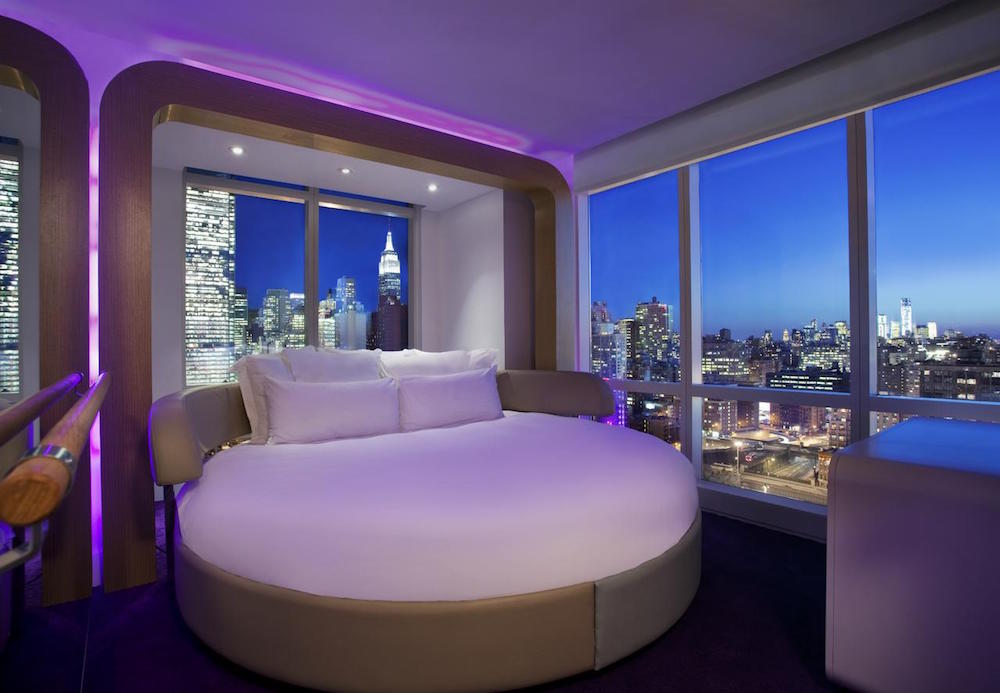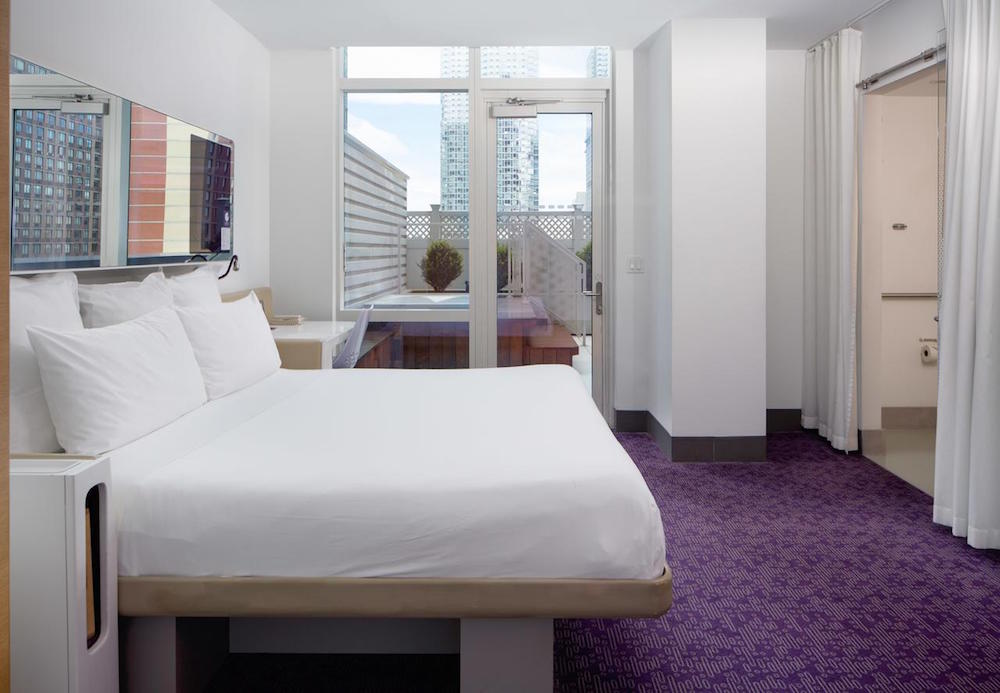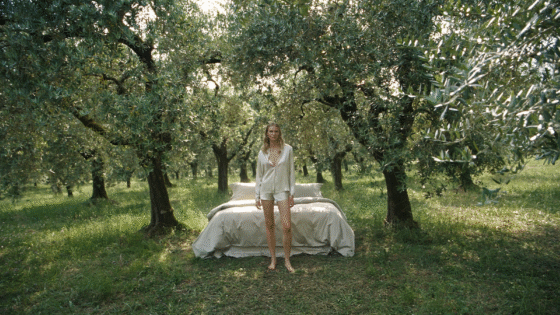With its fascinating storyline stretching from luxury superyachts to international hotels, bed and mattress brand Naturalmat’s stamp of approval can be traced right back to the source, as editor Hamish Kilburn learns when he pays a visit to the brand’s HQ in Topsham, Devon…
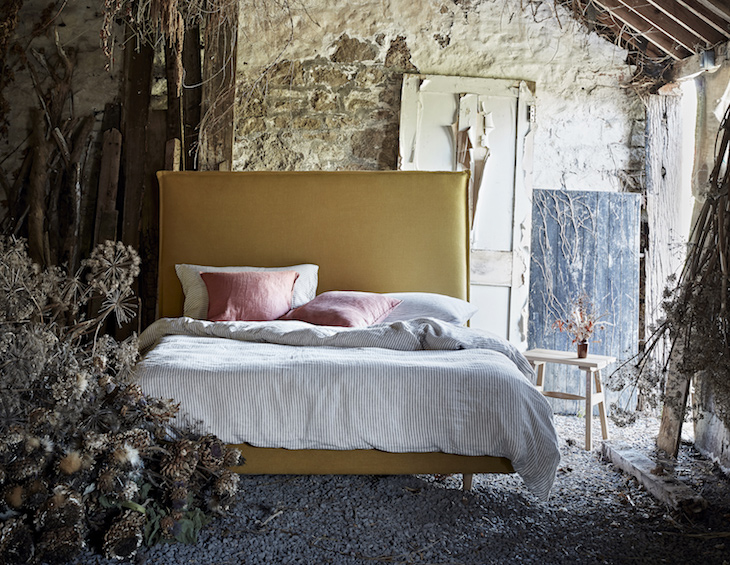
The story behind the success of bed and mattress manufacturer Naturalmat, and its esteemed reputation for being a conscious brand, all started more than 20 years ago. The Tremlett family, boat builders at the time, were in their yard in Topsham, Devon, and realised that there was a void in the luxury marine industry.
Mark Tremlett and his father designed luxury superyachts for the super-rich, which were complete with high-end fittings and fixtures while flooded with innovative space-saving solutions. Each vessel that would come out of the yard was perfectly designed for its heavy pocketed owner.
And yet, the family realised that while the luxury marine industry had evolved into an exciting design-led arena, the pre-existing beds that were being specified within these floating abodes were not fit for purpose. “I saw that people were still sleeping on polyurethane foam mattresses underneath it all,” said Mark, who is the co-founder of Naturalmat, explained to Hotel Designs. “This is not a great material to use on a boat (or any bed) as it’s not breathable, leading to issues of damp and mould, and doesn’t give the most comfortable experience.” It was during this lightbulb moment when Naturalmat was born.
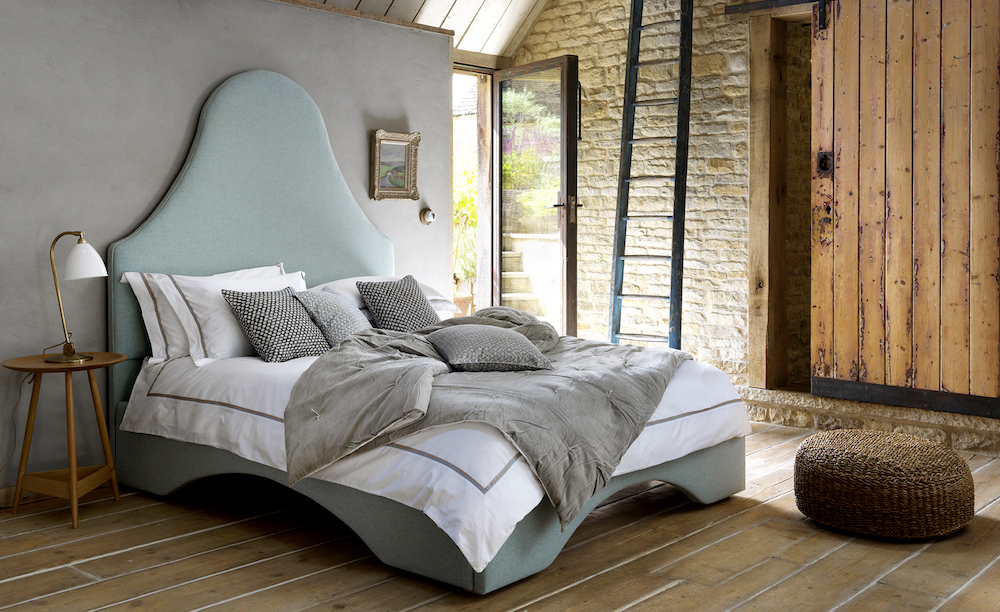
Image caption: The Rosemoor Bed | Image credit: Naturalmat
Five interesting facts about Naturalmat
- The company saves approximately 40,000 kw per year through its various eco initiatives
- Naturalmat offers three 100 per cent natural fibre mattresses, and three natural fibre plus pocket spring mattresses
- Naturalmat uses the husk of a coconut within its mattresses, which gives the user a fairly straight, robust fibre. But if you twist these very tightly and unravel them, they retain that curl which is then perfect to tease into a pad —in the absence of metal coils, it’s the natural ‘spring’ layer that provides the structure and bounce on each mattress
- Naturalmat does not use fire retardant chemicals in any of its products
- As of last year, Naturalmat done away with using plastic in packaging, and now the various packaging across the business is either from potato starch, corn starch, sugar cane, unbleached cotton, recycled kraft boxes, paper bags, or large, infinitely reusable mattress-sized duffle bags.
A few years after all but conquering the marine and nursery industry with locally and intuitively designed mattresses, in 2008 the company was approached by Simon Woodroffe, founder of Yo! Sushi, who had just launched a new hotel concept, YOTEL. Naturalmat soon landed its first major hotel project, when Woodroffe specified the brand for YOTEL New York. With smaller sized rooms, which the hotel brand refers to as cabins, the meaningful partnership was stitched together. It was this leap into the hospitality market that allowed the Devonshire-based family business to boom on the international hotel design scene.
- Image caption: Yotel New York, where Naturalmat’s hotel narrative began | Image credit: Yotel New York Times Square
- Image caption: Yotel New York, where Naturalmat’s hotel narrative began | Image credit: Yotel New York Times Square
Following the extensive project inside the 669-key lifestyle hotel, more relationships between the bed manufacturer and hotel brands such as Qbic, Six Senses Resorts, Z Hotels, Hoxton Hotels forged as Naturalmat’s unique and fully sustainable manufacturing process complimented brand, sustainability and quality standards.
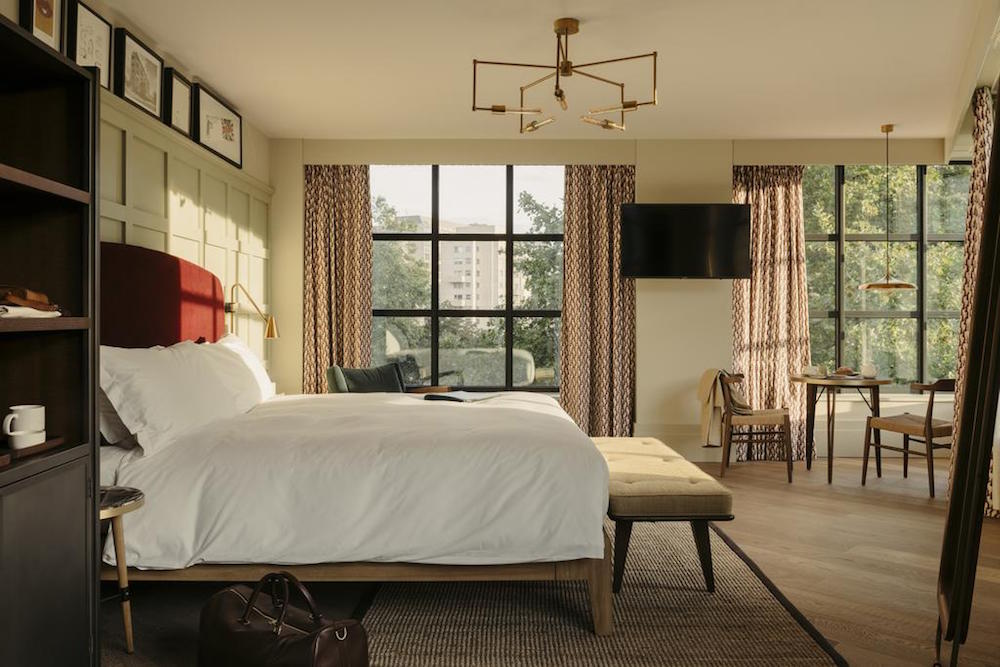
Image caption: Hoxton Hotels specifies Naturalmat mattreses | Image credit: Hoxton Hotels/Ennismore
Following the bed and mattress brand winning Best in British Product Design at The Brit List Awards 2019, I headed down south to understand how each mattress is made, by hand. But before we dive in, first let’s explore where the materials are sourced from. The organic lambswool, used to create comfortable products that are unmatched, comes from Soil Association certified farms in Devon, Dorset and Somerset. The company purchases direct from organic farmers, not just to ensure the highest quality but also to give the farmers a better return than taking the wool to market. As a result, the company is consciously supporting the local farming community.
Once the wool has been purchased, here is the step-by-step process behind each and every handmade Naturalmat mattress:
- First the roll of wool and cotton herringbone ticking is cut to the size of the mattress that has been ordered.
- The company’s precise sewing team then stitch the handles onto the edge panels, as well as the Naturalmat label onto the surface.
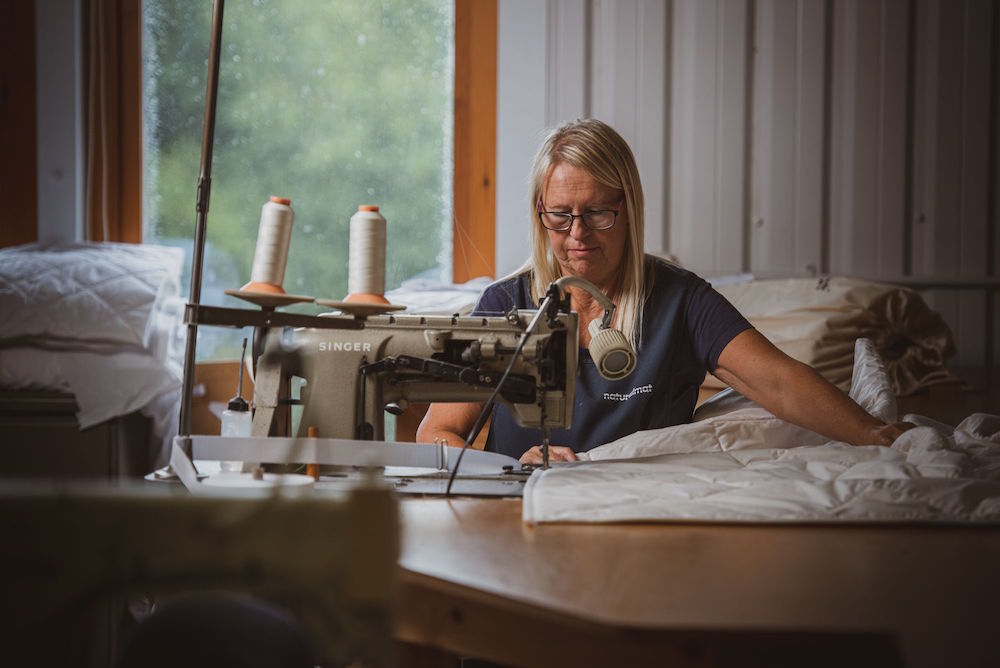
Image caption: Anne is one of Naturalmat’s precise sewing team | Image credit: Naturalmat
- Downstairs in the mattress making section of the factory, a team of two layer the mattress ‘sandwich’ starting with coir (or a spring unit, if being used), layering with natural latex, mohair, cashmere, or whatever else the ‘mattress recipe’ calls for.
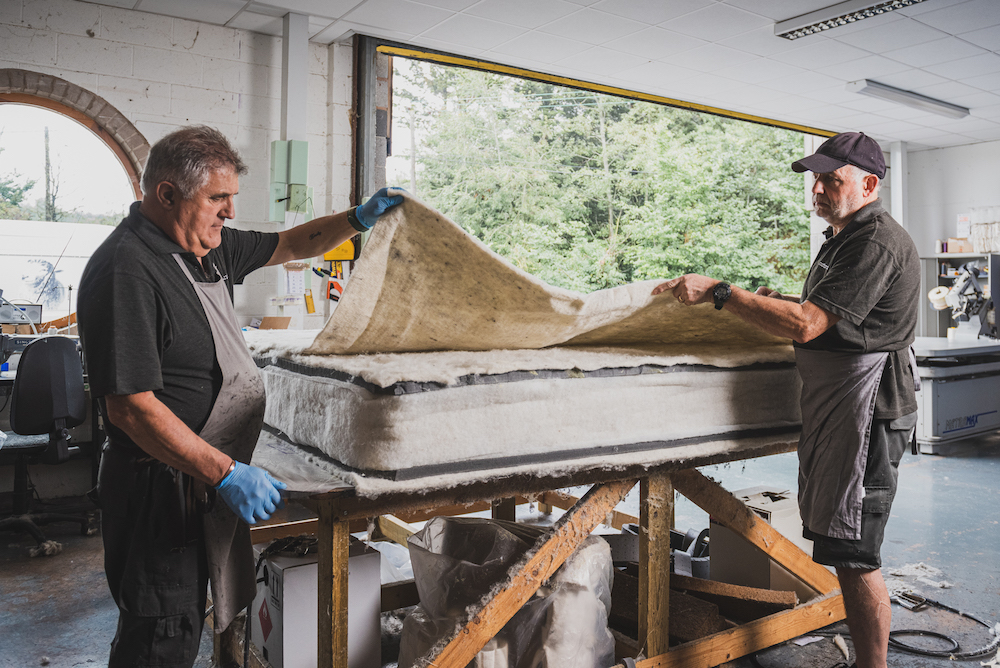
Image caption: A team of two layer the mattress ‘sandwich’ starting with coir | Image credit: Naturalmat
- When this stage is complete, each mattress and topper that is manufactured gets a top layer of organic lambswool, and the covers are loosely stretched out onto either side. The side panel is then rolled around the edges and loosely pinned.
- This ‘sandwich’ is then moved to a large table where the brand’s expert upholsterer (who’s been making mattresses for more than 20 years) runs a clever tape-edging machine around it, which seals the mattress sandwich with the brand’s signature grey wool and cotton piping. The mattress is then flipped (bit tricky for Emperor-sized units), then the team tape-edge the other side.
- Once the ‘sandwich’ is sealed, it’s moved across to a jig which props it up on its side, allowing the team to tuft all the buttons through the mattress. The tufting is what keeps all the natural fibres in place, as well as offers that bit of ‘puff’ for comfort.
- The finished mattress is then slid into one of the company’s large, recyclable, sugar-cane derived packaging bags, sealed, then loaded onto a Naturalmat van ready for delivery.
What’s as impressive as the quality behind each product is the company’s passion around sustainability. From the very beginning, the company took a different approach to the rest of the trade. The factory, for example, that shelters this innovative manufacturing process is on its own an eco-friendly machine, complete with solar paneling that powers the building and the operations inside.
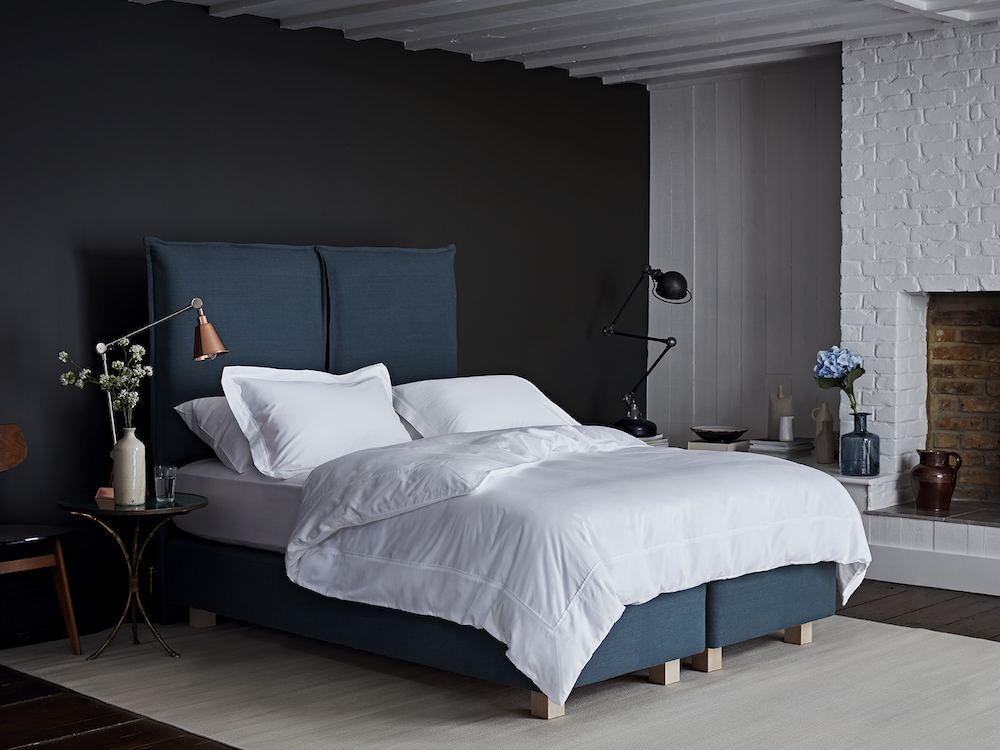
Image credit: Naturalmat
From a materials perspective, Naturalmat could not understand why the majority of mattresses were made using man-made synthetic materials that were neither biodegradable nor from a sustainable source.
Most recently, the bed and mattress brand’s eco credentials caught the attention of Geetie Singh-Watson, a self-proclaimed warrior against greenwashing in hospitality, as she was designing The Bull Inn in Totnes. Singh-Watson was only interested in sourcing all products and services locally and researched each brand thoroughly before specifying each and every product within the eight-key pub/hotel.
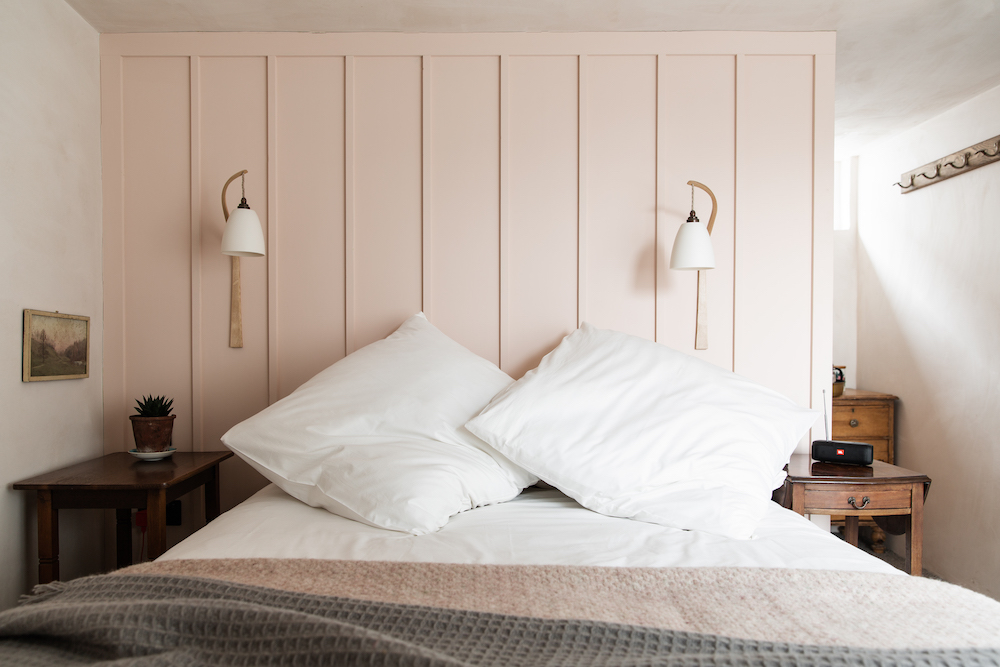
Image caption: Naturalmat supplied the beds for The Bull Inn, Totnes credit: Rachel Hoile Photography
With the brand catching the attention of authentic independents and large chains – it is currently processing an order for the first urban Six Senses hotel, which will open in New York – the brand’s modern attitude matched with traditional ethos is going from strength to strength, and in turn is educating the hotel design and hospitality arena on the values of conscious design.
Naturalmat is one of our Recommended Suppliers and regularly features in our Supplier News section of the website. If you are interested in becoming one of our recommended suppliers, please email Katy Phillips.
Main image credit: Naturalmat

